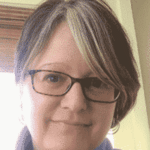Seasonal affective disorder can impact quality of life. Find out the details and statistics of this condition and learn about how it is treated.
Do you find yourself experiencing a loss of energy and a sense of sadness during certain times of the year? You may have seasonal affective disorder. Seasonal affective disorder is a relatively common condition, particularly in northern climates when fall and winter seasons significantly shorten the hours of sunlight per day.
Facts about seasonal affective disorder include:
- There are two types of seasonal depression: winter onset and summer onset
- Reduction in exposure to sunlight is the primary cause of the condition, resulting in decreased serotonin levels
- Increased darkness during the fall and winter months increases melatonin levels, influencing sleep patterns
- Seasonal depression often impacts appetite and results in weight gain due to cravings for carbohydrates
Prevalence of Seasonal Depression
As one might expect, seasonal affective disorder prevalence is higher in northern climates and largely depends on one’s proximity to the equator. The farther an area is from the equator, the less sunlight they are apt to get during fall and winter months. Compared to 1% of Floridians, 9% of those who live in New England or Alaska experience seasonal depression.
Seasonal Depression Risk Factors
Risk factors for seasonal affective disorder are relatively clear cut. If you are female, you are more likely to experience seasonal depression than men, at a 3 to 1 ratio. People who experience this condition usually begin to notice it in their early 20s, and it often runs in families, suggesting a genetic component to seasonal affective disorder. Geographic location plays a key role, in that areas further from the equator experience higher rates of seasonal depression.
Diagnosing Seasonal Affective Disorder
Seasonal affective disorder according to DSM-5 is known as depression with a seasonal pattern. A licensed mental health professional can diagnose the condition, which is determined by meeting the criteria for the condition.
Seasonal affective disorder criteria include:
- Depressive symptoms (sadness, tearfulness, loss of energy, agitation, sleep issues, fatigue) that correspond with a particular time of year (i.e., fall or winter)
- Symptoms disappear when the season ends (season changes to spring or summer)
- Seasonal depression has occurred for at least two years during a designated season
- There have been more episodes of seasonally-related depressive experiences than non-seasonal depressive episodes over the lifespan of the individual
Rates of SAD and Co-Occurring Conditions
Seasonal affective disorder and depression are not the same condition and generally do not co-occur. One can have a diagnosis of depression that does not relate to seasonal changes. The primary distinction between the two conditions is that seasonal depression is alleviated with the change of season, while depression is not.
Other conditions can co-occur with seasonal depression, such as anxiety or substance use disorder. When seasonal affective disorder and anxiety co-occur, it can result in avoidant behaviors and withdrawal from others. Seasonal depression that is self-medicated with substance use can result in adverse outcomes that impact one’s ability to cope effectively and damage relationships with others. Substance use disorder is less likely to remit during the spring and summer months, increasing the likelihood of a long-term condition.
One study found that seasonal affective disorder and binge eating are correlated. The study showed a link between negative mood, seasonal changes and binge eating.
Seasonal Affective Disorder Treatment Options
Seasonal affective disorder treatment can be highly effective. Common treatment modalities include light therapy, talk therapy and medication. Lifestyle changes are also recommended during seasonal depressive episodes, including increased exercise, spending time outside and eating healthy, well-balanced meals.
Are you struggling with seasonal depression and a co-occurring substance use condition? Help is available. Reach out to The Recovery Village for more information about how our services may help you.


Psychiatry.org “Diagnostic and Statistical Manual of Mental Disorders (DSM–5).” American Psychiatric Association, 2013. Accessed April 27, 2019.
Nimh.nih.gov “Seasonal Affective Disorder.” Accessed April 27, 2019.
Donofry, SD et al. “Prevalence and correlates of binge eatin[…]l affective disorder.” US Library of Medicine NCBI (2014). Accessed April 27, 2019.
Dryden-Edwards, R. “Seasonal Affective Disorder (SAD).” MedicineNet. Accessed April 27, 2019.
Regis College. “What is Seasonal Affective Disorder?” Accessed April 27, 2019.
The Recovery Village aims to improve the quality of life for people struggling with substance use or mental health disorder with fact-based content about the nature of behavioral health conditions, treatment options and their related outcomes. We publish material that is researched, cited, edited and reviewed by licensed medical professionals. The information we provide is not intended to be a substitute for professional medical advice, diagnosis or treatment. It should not be used in place of the advice of your physician or other qualified healthcare providers.